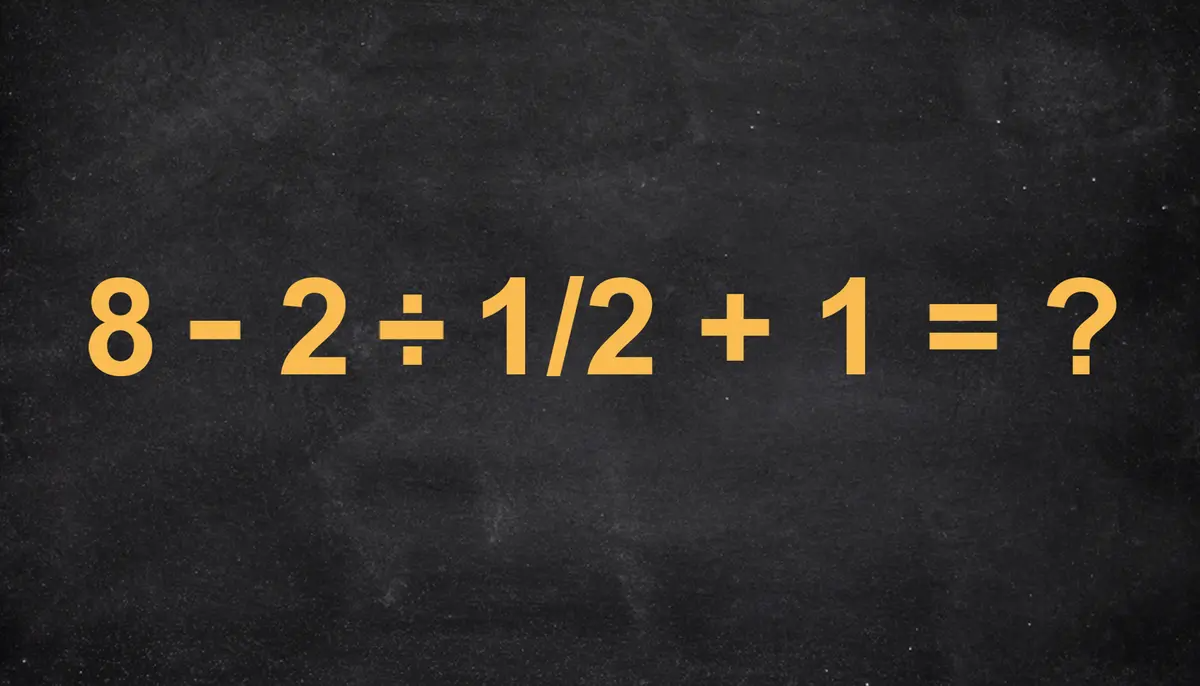The problem looks simple—almost too simple. While all of the numbers and operations are small and common enough, the problem is how to solve them and in what order.

Try it for yourself, and once you have your answer, or are completely stumped, scroll down to see the solution.
Some who saw the problem insisted that the solution was 4. Meanwhile, others said the answer was 13. Were either of these your answers?

These answers are incorrect, however. In both cases, you probably arrived at that answer by solving the question from left to right, making the error of forgetting the “order of operations” (more on that later). Those who got an answer of 4, however, made an additional error; they most likely erred on this part:
(8 – 2) ÷ 1/2
6 ÷ 1/2
perhaps mistakenly thinking that the product = 3, thus:
3 + 1 = 4
The problem with this is when dividing by a fraction, we must invert and multiply by the denominator. And that is how the others ended up with an answer of 13; they correctly solved the fraction, as shown below:
6 ÷ 1/2 = ?
1/6 × 2 = ?
1/6(6) × 2(6) = ?
1 × 12 = 12
and then went on to solve the question thusly:
12 + 1 = 13
However, although this answer was a very popular answer among people on social media, it is also incorrect, as they forgot to apply the order of operations.
The answer, as some commenters, including former math teachers, pointed out, relies on the order in which you solve each part of the question. The rule that tells us how to proceed has a very memorable acronym:
PEMDAS, which stands for Parentheses, Exponents, Multiplication-Division and, lastly Addition-Subtraction.
When solving different parts of the same order (e.g. multiplication and division are considered of the same order), then each part is solved from left to right.
When you apply the order of operations to the problem, you get a very different result. Since there are no parentheses or exponents, the first operation to be performed is division. If we divide 2 by 1/2, as per the above method already demonstrated, we get 4.
So, plugging that into the problem, it looks as follows:
8 – 2 ÷ 1/2 + 1 = ?
8 – 4 + 1 = 5
Using our order of operations and dividing our fraction using the proper method, we get an answer of 5.
Source: theepochtimes







